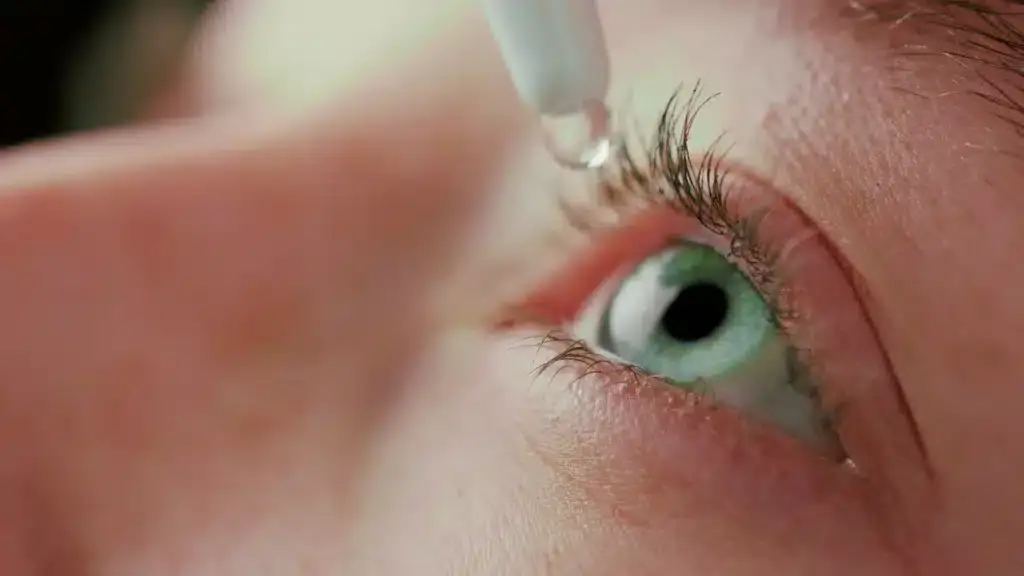Maybe you’ve never heard of Meibomian Gland Dysfunction (MGD), but it’s likely you know a thing or two about dry eyes. After all, an estimated 16 million people in the United States suffer from dry eyes. And believe it or not, MGD is actually thought to be the leading cause of dry eyes. So, if you or someone you know experiences dry or itchy eyes, you might find it helpful to review Meibomian Gland Dysfunction symptoms. The sooner you have a diagnosis, the sooner you can find an effective treatment.

What Are Meibomian Glands?
Meibomian glands are present on both the upper and lower eyelids, and they play an important role in your eyes’ hydration. Each eyelid has approximately 25 to 40 of these vertical glands, which secrete oil that mixes with tear film to prevent your tears from rapidly evaporating. When the meibomian glands are healthy and functional, they help keep the eyes moisturized. When these glands become blocked, however, they aren’t able to secrete oils. And if this is allowed to continue, the glands will eventually die.
What Is Meibomian Gland Dysfunction?
Meibomian gland dysfunction occurs when meibomian glands are no longer able to function properly. They become clogged, and either don’t produce enough oil or produce low-quality oil. Because the eyes are unable to maintain healthy tear film, they may feel dry and uncomfortable. If left untreated, this can result in chronic dry eyes and permanent eye damage.
Although it often occurs on its own, MGD is also associated with posterior blepharitis, anterior blepharitis, primary meibomianitis, and seborrheic dermatitis.
Meibomian Gland Dysfunction Symptoms
In the early stages of this condition, you might not notice any symptoms. But over time, if left untreated, symptoms will arise. Common Meibomian Gland Dysfunction symptoms include all of the following:
- Dryness
- Burning
- Itching
- Redness
- Stickiness or crusting
- Irritation
- Watery eyes
- Gritty eyes
- Blurry vision that comes and go
- Feeling like a foreign body (like sand or dirt) is in your eyes
- Styes or chalazia
If you’re experiencing any of these symptoms, schedule an appointment with an eye care professional. They will likely conduct a tear assessment test to better understand your eye health. Early diagnosis of MGD and effective treatment can prevent long-term damage to your eyes.
Treating MGD with iLUX2®
At Heffington’s, we’re proud to offer iLux2®, an innovative system that effectively treats MGD. This gentle and noninvasive treatment targets the root of MGD: the blocked Meibomian glands.
During this quick and easy in-office procedure, your eye doctor will use the iLux2® device to conduct advanced imaging. This allows the doctor to view your Meibomian glands and identify areas of concern. Then, they will use BlephEx to clean your eyelids in preparation for the procedure. Finally, they will use the iLux2® to therapeutically warm the eyelids and express the clogged oil. Not only does this immediately unblock your Meibomian glands, but also it encourages the healthy production of oil and should quickly improve your tear film. The process is not painful and provides immediate relief. Plus, the entire procedure only takes about 10-20 minutes! Results may vary but could last for several years.
If you suffer from dry eyes, but you’re nervous about this new technology, check out the following video to better understand how quick, easy, and painless this treatment actually is.

_____
Do you suffer from dry eyes? If you live in southwest Missouri, stop by Heffington’s. Since 1975, the Heffington family has assisted the Springfield community with top-quality eye care and affordable eyeglasses and contacts. To learn more about our products and services, please get in touch with us online, send an e-mail to asktheexperts@heffingtons.com, or give us a call at 417-869-3937 (Optiland location) or 417-882-3937 (House of Vision location).
